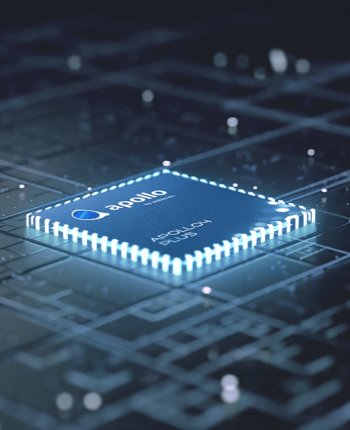
SleepKit can be an AI Development Package (ADK) that enables developers to easily Develop and deploy actual-time rest-monitoring models on Ambiq's family of extremely-reduced power SoCs. SleepKit explores several rest connected jobs which include snooze staging, and snooze apnea detection. The package involves various datasets, attribute sets, successful model architectures, and many pre-trained models. The target with the models will be to outperform regular, hand-crafted algorithms with successful AI models that still suit inside the stringent useful resource constraints of embedded equipment.
8MB of SRAM, the Apollo4 has a lot more than more than enough compute and storage to deal with advanced algorithms and neural networks while displaying vivid, crystal-distinct, and smooth graphics. If more memory is required, external memory is supported by Ambiq’s multi-little bit SPI and eMMC interfaces.
AI models are like sensible detectives that analyze knowledge; they look for designs and forecast ahead of time. They know their career don't just by heart, but from time to time they're able to even make your mind up better than men and women do.
SleepKit gives a model manufacturing facility that means that you can conveniently create and educate custom made models. The model factory consists of numerous modern day networks like minded for productive, true-time edge applications. Just about every model architecture exposes many superior-amount parameters which might be utilized to customise the network for your supplied software.
The Audio library requires advantage of Apollo4 Plus' hugely successful audio peripherals to seize audio for AI inference. It supports several interprocess communication mechanisms to create the captured info available to the AI attribute - just one of such is usually a 'ring buffer' model which ping-pongs captured details buffers to aid in-put processing by aspect extraction code. The basic_tf_stub example includes ring buffer initialization and usage examples.
The same as a gaggle of experts would have suggested you. That’s what Random Forest is—a set of determination trees.
Being Ahead from the Curve: Remaining forward is usually important in the modern day organization natural environment. Firms use AI models to react to shifting marketplaces, foresee new current market requires, and take preventive measures. Navigating these days’s continually shifting organization landscape just obtained simpler, it really is like obtaining GPS.
This serious-time model processes audio containing speech, and eliminates non-speech sound to raised isolate the primary speaker's voice. The technique taken In this particular implementation intently mimics that explained in the paper TinyLSTMs: Productive Neural Speech Enhancement for Listening to Aids by Federov et al.
GPT-three grabbed the whole world’s attention not just as a result of what it could do, but on account of the way it did it. The putting bounce in overall performance, Specifically GPT-3’s capability to generalize across language tasks that it had not been specifically educated on, did not come from better algorithms (even though it does count Apollo 2 closely over a style of neural network invented by Google in 2017, identified as a transformer), but from sheer dimensions.
The crab is brown and spiny, with extended legs and antennae. The scene is captured from a large angle, displaying the vastness and depth in the ocean. The drinking water is obvious and blue, with rays of sunlight filtering by means of. The shot is sharp and crisp, using a large dynamic assortment. The octopus as well as the crab are in target, although the track record is somewhat blurred, creating a depth of field effect.
Examples: neuralSPOT contains various power-optimized and power-instrumented examples illustrating the way to use the above libraries and tools. Ambiq's ModelZoo and MLPerfTiny repos have more optimized reference examples.
Apollo2 Family SoCs supply Fantastic Strength effectiveness for peripherals and sensors, providing developers versatility to create innovative and have-abundant IoT products.
AI has its very own wise detectives, called selection trees. The decision is produced using a tree-structure where they review the info and split it down into achievable outcomes. These are great for classifying facts or serving to make choices inside a sequential fashion.
The DRAW model was published just one calendar year back, highlighting yet again the quick progress getting created in coaching generative models.
Accelerating the Development of Optimized AI Features with Ambiq’s neuralSPOT
Ambiq’s neuralSPOT® is an open-source AI developer-focused SDK designed for our latest Apollo4 Plus system-on-chip (SoC) family. neuralSPOT provides an on-ramp to the rapid development of AI features for our customers’ AI applications and products. Included with neuralSPOT are Ambiq-optimized libraries, tools, and examples to help jumpstart AI-focused applications.
UNDERSTANDING NEURALSPOT VIA THE BASIC TENSORFLOW EXAMPLE
Often, the best way to ramp up on a new software library is through a comprehensive example – this is why neuralSPOt includes basic_tf_stub, an illustrative example that leverages many of neuralSPOT’s features.
In this article, we walk through the example block-by-block, using it as a guide to building AI features using neuralSPOT.
Ambiq's Vice President of Artificial Intelligence, Carlos Morales, went on CNBC Street Signs Asia to discuss the power consumption of AI and trends in endpoint devices.
Since 2010, Ambiq has been a leader in ultra-low power semiconductors that enable endpoint devices with more data-driven and AI-capable features while dropping the energy requirements up to 10X lower. They do this with the patented Subthreshold Power Optimized Technology (SPOT ®) platform.
Computer inferencing is complex, and for endpoint AI to become practical, these devices have to drop from megawatts of power to microwatts. This is where Ambiq has the power to change industries such as healthcare, agriculture, and Industrial IoT.
Ambiq Designs Low-Power for Next Gen Endpoint Devices
Ambiq’s VP of Architecture and Product Planning, Dan Cermak, joins the ipXchange team at CES to discuss how manufacturers can improve their products with ultra-low power. As technology becomes more sophisticated, energy consumption continues to grow. Here Dan outlines how Ambiq stays ahead of the curve by planning for energy requirements 5 years in advance.
Ambiq’s VP of Architecture and Product Planning at Embedded World 2024
Ambiq specializes in ultra-low-power SoC's designed to make intelligent battery-powered endpoint solutions a reality. These days, just about every endpoint device incorporates AI features, including anomaly detection, speech-driven user interfaces, audio event detection and classification, and health monitoring.
Ambiq's ultra low power, high-performance platforms are ideal for implementing this class of AI features, and we at Ambiq are dedicated to making implementation as easy as possible by offering open-source developer-centric toolkits, software libraries, and reference models to accelerate AI feature development.

NEURALSPOT - BECAUSE AI IS HARD ENOUGH
neuralSPOT is an AI developer-focused SDK in the true sense of the word: it includes everything you need to get your AI model onto Ambiq’s platform. You’ll find libraries for talking to sensors, managing SoC peripherals, and controlling power and memory configurations, along with tools for easily debugging your model from your laptop or PC, and examples that tie it all together.
Facebook | Linkedin | Twitter | YouTube